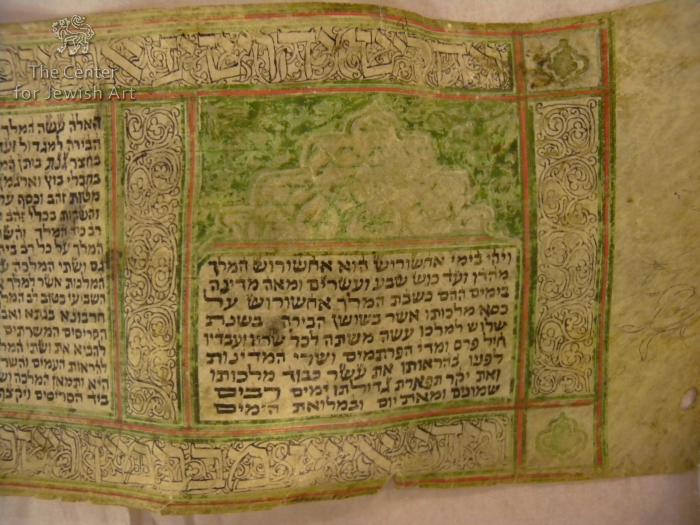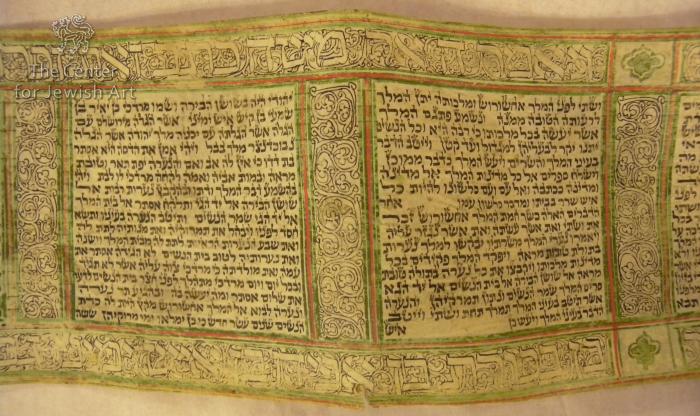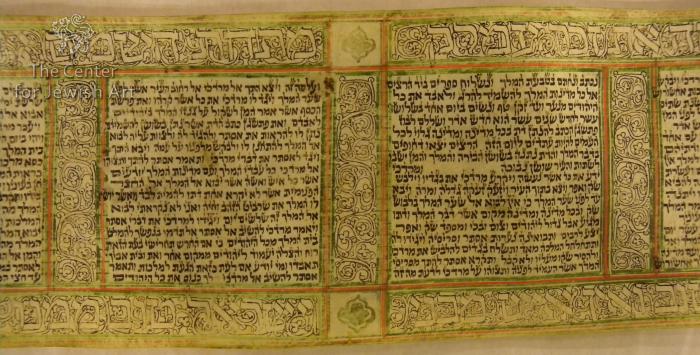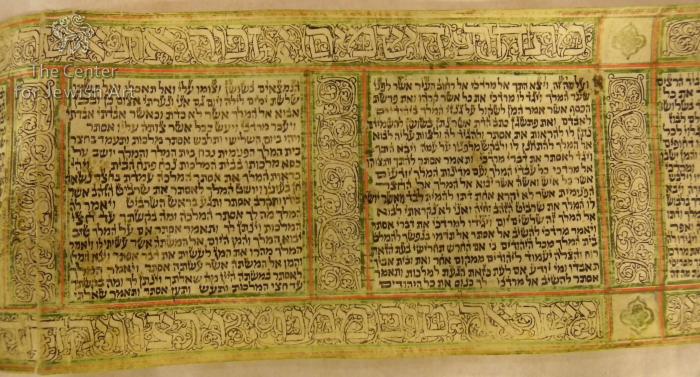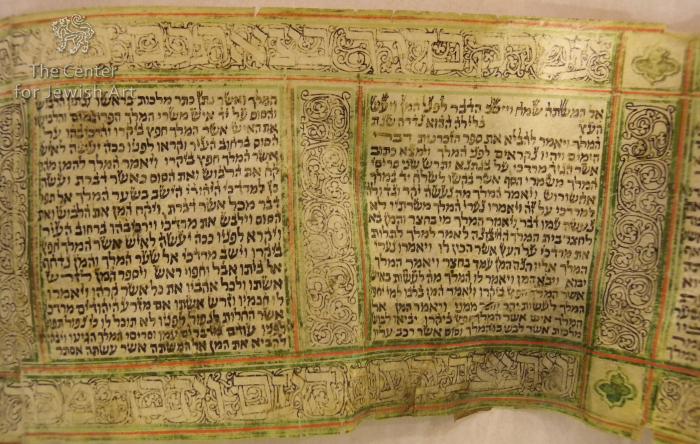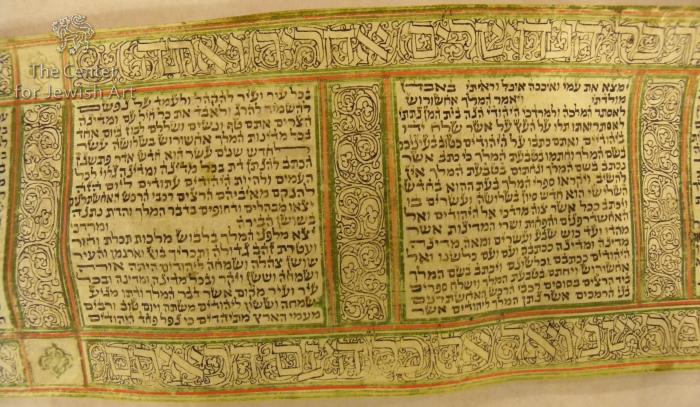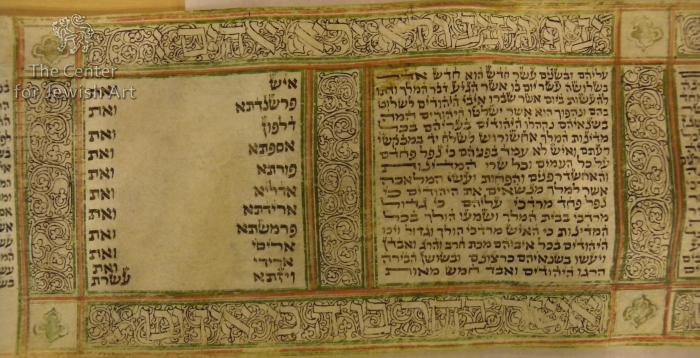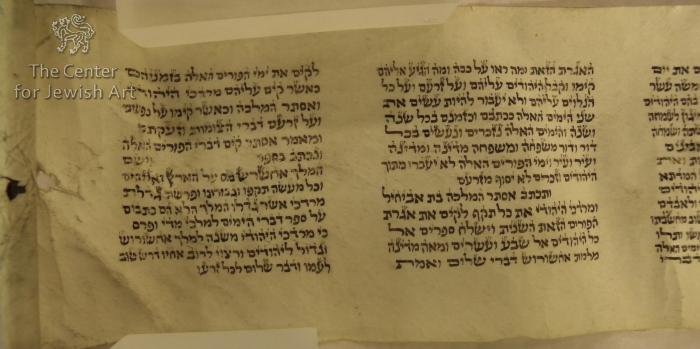Obj. ID: 38107 IM Amalek Esther Scroll, Iraq, mid-19th century

The length of the membranes in the scroll: 1) 510 mm, 2) 385 mm, 3) ca. 200 mm, 4) 530 mm, 5) min. 300 mm (the final part of the scroll is rolled).
Dimensions of the selected details in the scroll:
- upper and lower margins: 16 mm (height);
- letters drawn on the margins: 8-10 mm;
- a text panel (inside): ca. 57x60 mm;
- panels separating text panels: ca. 55x11 mm;
- an average letter: 2 mm (height);
- spaces between the lines of the text: 1,5 mm.
The roller: ca. 200 mm (height).
In general, the manuscript is preserved in good condition, although its membranes are stained and torn in several places.
The decoration incorporated in the first text panel is poorly preserved and no details can be seen. Some letters drawn on the margins are damaged too.
The text is legible, although the shade of ink is not everywhere the same.
The third membrane is crumpled.
In two places, the membranes are repaired with pieces of leather.
The right edge of the first membrane is blank and the scroll opens with a prefatory panel containing an arch that is poorly preserved and fills an upper half of the first text panel. The Hebrew text of the Book of Esther is inscribed in rectangular text panels surrounded by hand-drawn floral decoration with trefoils. The upper and lower margins of all membranes are adorned with Hebrew quotations in large hand-drawn letters. They are colorless while their background is filled with dense foliate and floral ornaments, similar to these between the text panels. The letters form complete or fragmentary Biblical citations mentioning Amalek, an ancient enemy of the Jewish nation, who is believed to be an ancestor of Haman: Ex. 17:13-14, De. 25:17-19, 1Sa. 9:1-2, and 1Sa. 10:24. The fifth membrane and the final part of the fourth membrane are not decorated.
The scroll is mounted on a silver (?) roller.
The Book of Esther in Hebrew and several verses from other biblical books are written on the upper and lower margins.
The scroll is formed of 5 sheets, containing in total 25 columns of text of 17 lines each, except for col. 20 which includes 11 lines divided into two half-columns.
The membranes contain a different number of columns of text: no. 1 - 6, no. 2 - 5, no. 3 - 3, no. 4 - 7, no. 5 - 4.
The text is written in Hebrew square Oriental script with tagin in black ink on the flesh side of thin parchment membranes. The side of the text is brighter than the blank side of the sheets but both are very similar to each other. The last membrane is brighter than all other membranes in the scroll that are slightly greyish.
The letters ח (Es. 1:6) and ת (Es. 9:29) are not highlighted in the text, similarly as in col. 20 there are no enlarged or diminished letters.
The ruling is made with a hard point along with the membranes, but it is visible only in the decorations separating the text panels.
The pricking is invisible.
The membranes in the scroll are stitched together.
None
No bibliography on the scroll is available.



